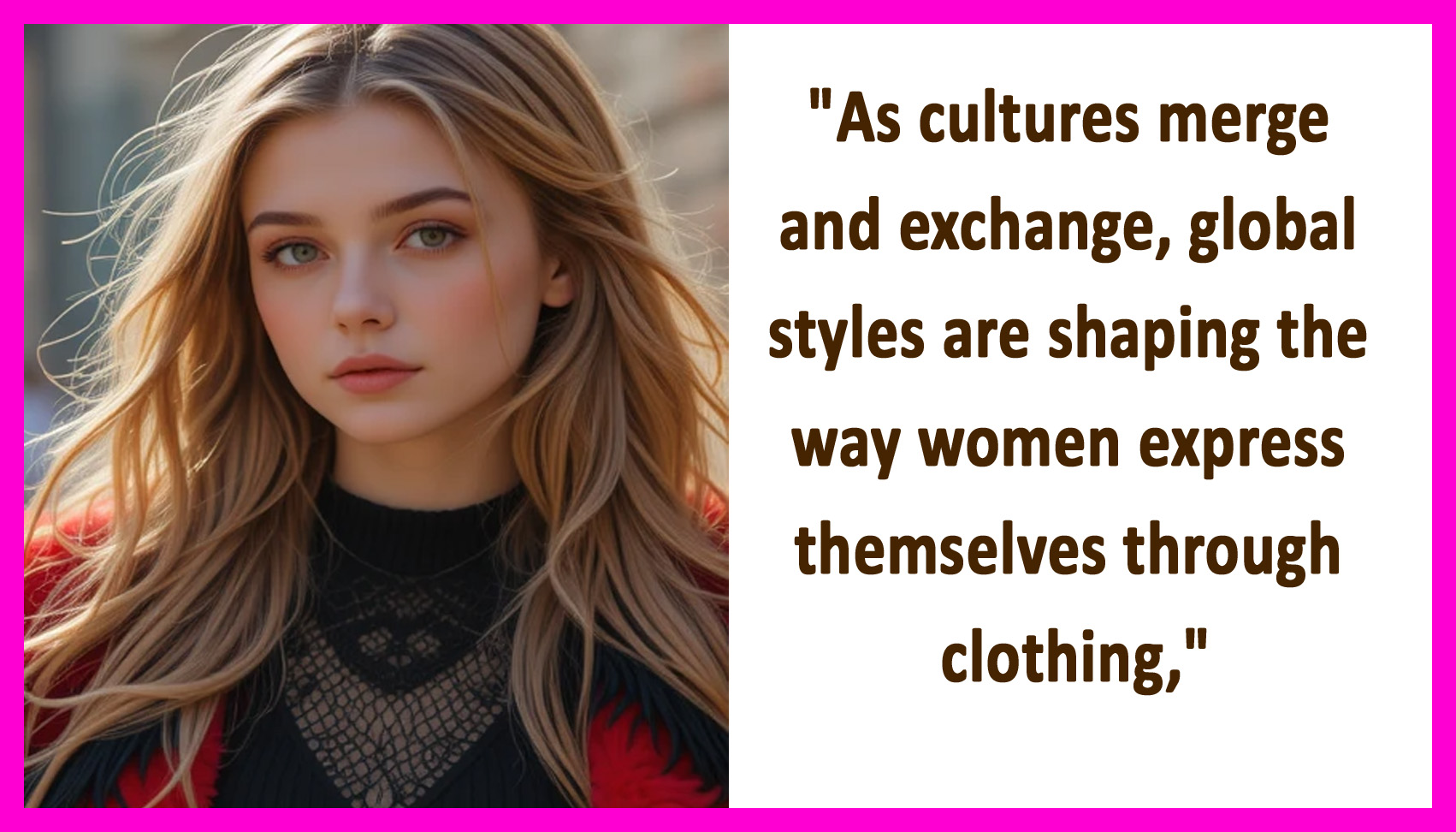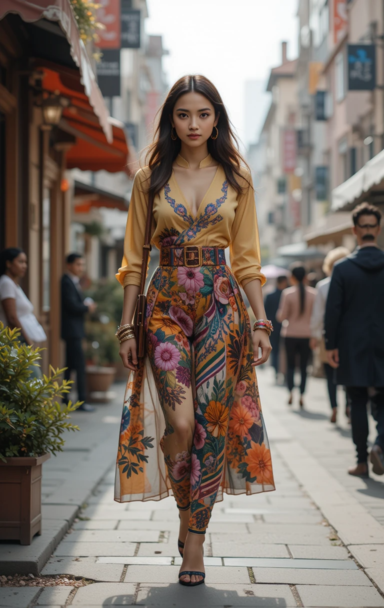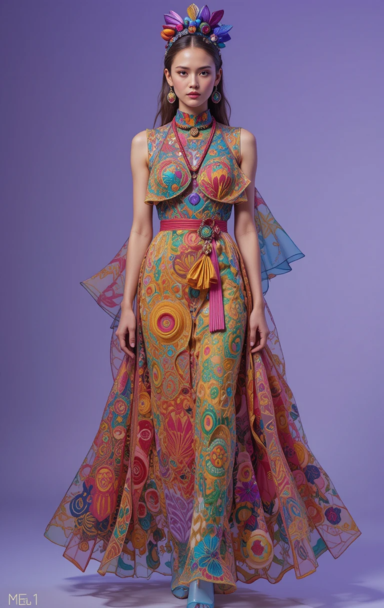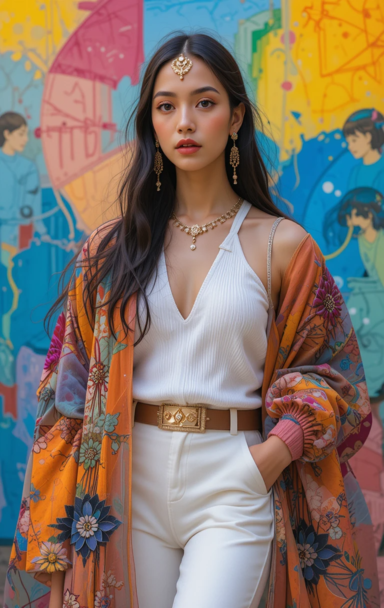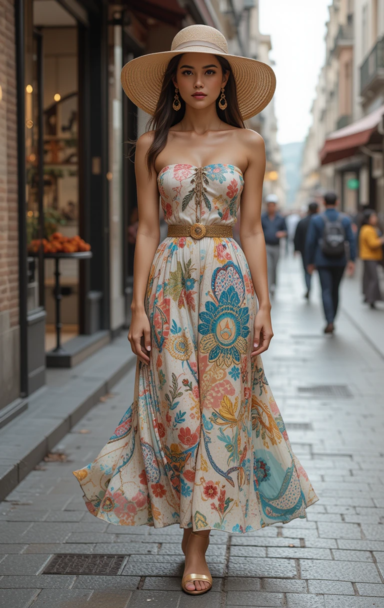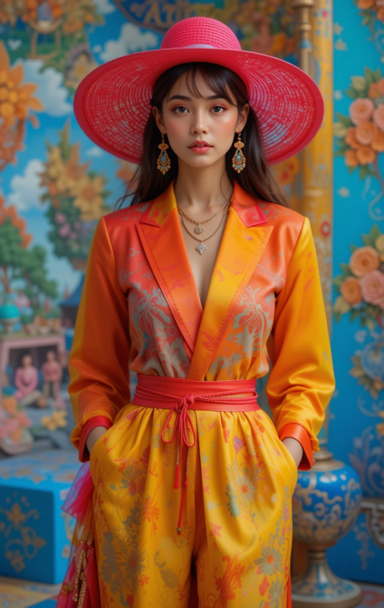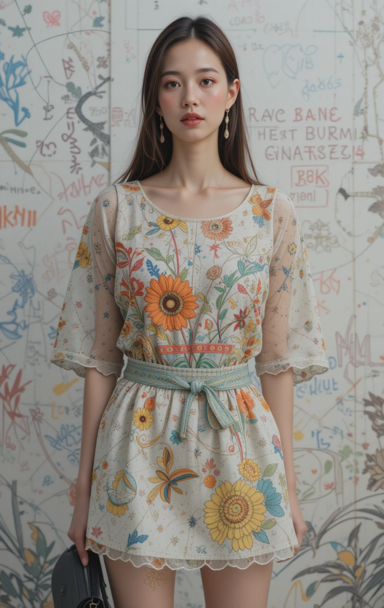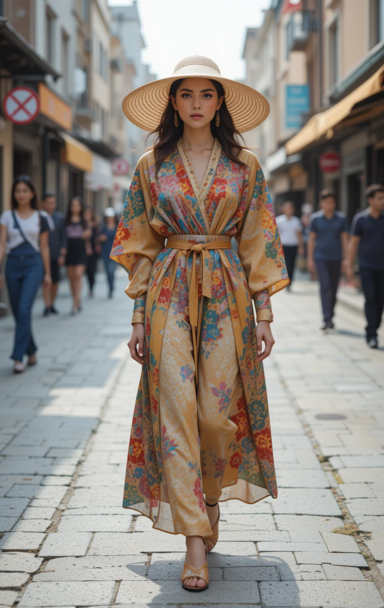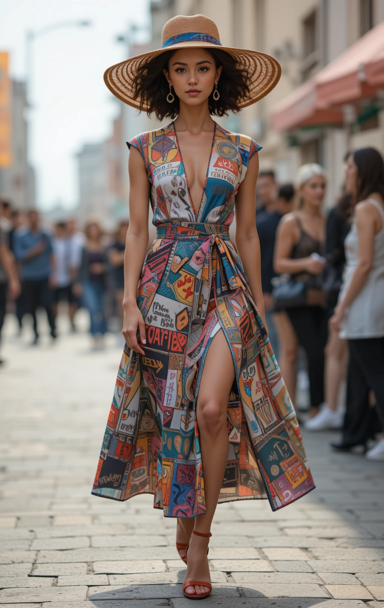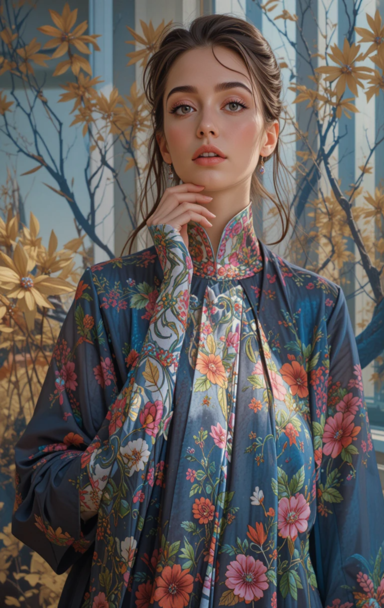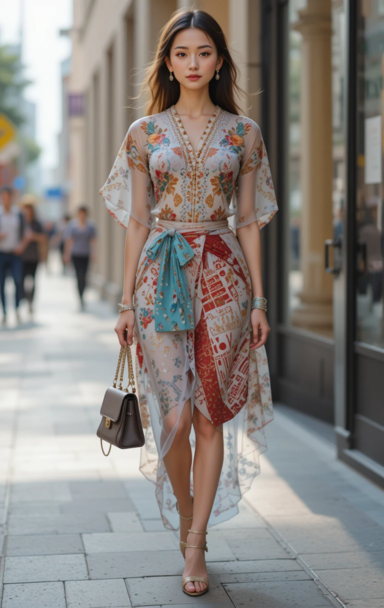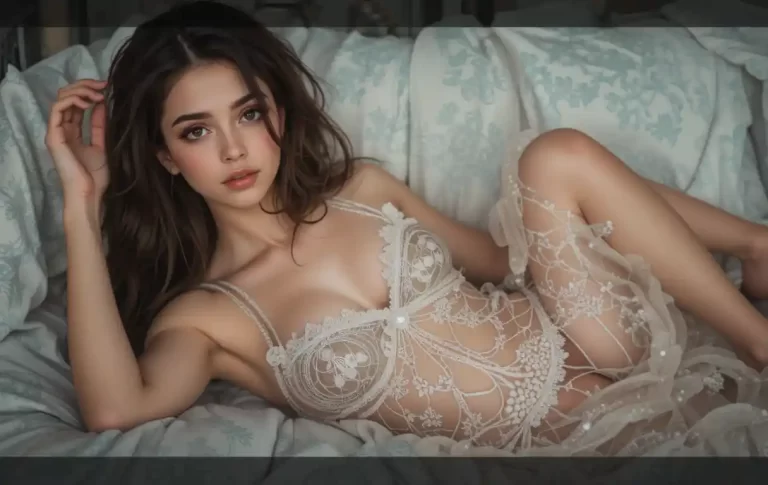Cultural Influence: How Global Styles Are Shaping Modern Women’s Fashion
Fashion has long been a reflection of culture, identity, and societal shifts. Throughout history, the way people dress has served as a visual representation of their values, beliefs, and social structures. In today’s globalized world, modern women’s fashion is an eclectic blend of styles, inspirations, and trends from all corners of the earth. As cultures merge and exchange, global styles are shaping the way women express themselves through clothing, creating a dynamic and ever-evolving landscape in the world of fashion. From the bustling streets of Tokyo to the vibrant markets of Marrakech, and from the sophisticated runways of Paris to the casual cool of Los Angeles, modern fashion reflects a fusion of cultural influences that transcend borders.
This article explores how global styles are shaping modern women’s fashion, focusing on key cultural influences, the role of technology and social media, and the rise of inclusivity and sustainability. By examining these factors, we can understand how fashion is no longer just about trends, but about embracing a rich tapestry of cultural diversity and individual expression.
1. The Rise of Globalization in Fashion
Globalization has been a major driver in the evolution of modern fashion. With the advancement of technology, particularly in communication and transportation, the world has become more interconnected. This has allowed for a greater exchange of ideas, aesthetics, and styles between different regions, allowing global influences to shape what is considered fashionable. Today, designers, influencers, and consumers are no longer limited to their local or national fashion scenes; they can draw inspiration from a wide range of cultures.
One of the most notable ways globalization has impacted fashion is through the ability to access styles from various parts of the world. A woman living in New York can easily shop for traditional Indian saris, African kente cloths, Japanese kimonos, or Italian leather accessories, all from the comfort of her home. Likewise, brands and designers have the opportunity to showcase their collections to a global audience, leading to an exchange of fashion that reflects the blending of cultural influences.
2. Cultural Influences on Women’s Fashion
Global styles are influencing every aspect of modern women’s fashion, from clothing and accessories to makeup and hairstyle choices. Here are some prominent cultural influences shaping women’s fashion today:
a. African Fashion
African fashion has become increasingly influential in recent years, with traditional fabrics like kente, wax prints, and Ankara fabric becoming prominent in global fashion. Designers like Stella Jean, LaQuan Smith, and Oumou Sy have all incorporated African textiles and aesthetics into their collections, merging traditional designs with modern silhouettes.
The bold colors, geometric patterns, and symbolic designs found in African fashion speak to the importance of identity, heritage, and community. These textiles have become symbols of empowerment, particularly for Black women, and are being embraced by fashion-conscious women worldwide. African fashion also incorporates a rich diversity of styles, ranging from the elegance of Nigerian fashion to the streetwear-influenced aesthetics of South African fashion.
b. Asian Influence
Asia’s rich cultural history has also played a significant role in shaping global fashion. From the elegant traditional clothing of China and Japan to the vibrant street style of cities like Seoul and Tokyo, Asian fashion is diverse and multifaceted.
Chinese silk, intricate embroidery, and ornate patterns are prominent features in the wardrobes of many luxury brands, and Japanese minimalism has influenced global fashion with its clean lines, neutral colors, and focus on craftsmanship. Designers like Issey Miyake, Rei Kawakubo (Comme des Garçons), and Yohji Yamamoto have all made significant contributions to global fashion, emphasizing the beauty of simplicity, structural design, and avant-garde aesthetics.
Additionally, Korean street style, as seen in the rise of K-pop culture, has had a significant impact on the fashion world. The playful mixing of high-fashion pieces with casual wear, along with the influence of bold, experimental trends, has captivated fashion enthusiasts globally. Korean beauty standards, too, have shaped global beauty trends, particularly in makeup and skincare.
c. Middle Eastern Fashion
Middle Eastern fashion, with its intricate embellishments, luxurious fabrics, and bold color palettes, has been a significant influence on global fashion in recent years. Designers from countries like Lebanon and the UAE, such as Elie Saab, Zuhair Murad, and Rami Kadi, have brought Middle Eastern glamour to the international stage, creating opulent gowns and haute couture collections admired around the world.
In addition to the glamorous side of Middle Eastern fashion, the modest fashion movement has grown in prominence. Modest fashion, which emphasizes clothing that covers the body more fully, has become an influential global trend. Brands like Dolce & Gabbana, H&M, and Zara have introduced modest clothing lines that cater to a growing demand for stylish, yet modest, attire. Social media influencers from the Middle East, South Asia, and Southeast Asia have played a significant role in popularizing this trend, demonstrating that modesty can be stylish, chic, and empowering.
d. Latin American Influence
Latin American culture has brought vibrant color, energy, and a sense of celebration to the world of fashion. The influence of traditional textiles, such as Mexican embroidered blouses, Brazilian carnival-inspired designs, and Colombian ruanas, is seen in contemporary collections across the globe. Designers like Carolina Herrera and Oscar de la Renta, both of Latin American descent, have built their careers on their ability to blend Latin-inspired aesthetics with global trends.
The fusion of indigenous patterns and contemporary designs from Latin American countries has also contributed to the worldwide popularity of sustainable fashion. Many Latin American artisans use locally sourced, eco-friendly materials to create handcrafted garments that celebrate cultural heritage while supporting sustainability.
3. The Role of Technology and Social Media
The rise of social media has been pivotal in accelerating the global exchange of fashion. Platforms like Instagram, Pinterest, TikTok, and YouTube have made it easier than ever for fashionistas around the world to share their personal style and discover new trends. Fashion influencers, bloggers, and content creators have become powerful voices, shaping how people engage with and interpret global styles.
Social media has democratized fashion by allowing anyone with an internet connection to access the latest trends, regardless of their geographic location. This has led to a blending of styles from different cultures, with women embracing a fusion of traditional and contemporary aesthetics. For example, a woman in Paris may pair a vintage Chanel blazer with a handwoven basket bag from Morocco, or a woman in Mumbai might wear a Western-style dress with a traditional dupatta.
Moreover, social media has also allowed the rise of street style, which often combines elements from various cultures and showcases individual creativity. As fashion becomes more personalized, it’s clear that global styles are no longer confined to specific regions or cultures but are instead an amalgamation of influences from across the world.
4. Inclusivity and Sustainability
Modern women’s fashion is increasingly shaped by calls for inclusivity, sustainability, and ethical production. These movements are not confined to one region but are global in scope, driven by consumer demand for clothing that reflects diverse identities and addresses environmental concerns.
a. Inclusivity
Inclusive fashion is all about ensuring that women of all shapes, sizes, ethnicities, and backgrounds are represented in the fashion industry. Brands are expanding their size ranges, featuring models from diverse racial and cultural backgrounds, and producing clothing that caters to a wider array of body types. The global embrace of inclusivity means that fashion is no longer restricted to one “ideal” or standard of beauty.
Fashion campaigns and runway shows are increasingly showcasing women from different cultures, sizes, and walks of life, making it clear that fashion is a space for self-expression for everyone. This trend has been supported by social media influencers from diverse backgrounds, who use their platforms to challenge beauty norms and advocate for greater representation in the fashion industry.
b. Sustainability
Sustainability has become a key concern in modern fashion, and it’s a global movement. Consumers, particularly younger generations, are more conscious than ever about the environmental and ethical implications of their fashion choices. Brands are responding by adopting sustainable practices, such as using eco-friendly materials, supporting fair trade, and reducing waste through recycling and upcycling.
The rise of “slow fashion”—a movement that values quality over quantity—has gained traction worldwide. Women from various cultures are embracing clothing that is ethically produced, long-lasting, and made from sustainable materials. This shift in mindset has led to a growing appreciation for artisanal craftsmanship, with many women choosing to support small, local businesses that celebrate cultural heritage while promoting environmental responsibility.
5. Conclusion: A Fusion of Cultures and Personal Expression
In conclusion, the fusion of global styles is shaping modern women’s fashion in exciting and transformative ways. From the bold prints of Africa to the minimalist elegance of Japan, and from the luxurious glamour of the Middle East to the vibrant energy of Latin America, cultural influences are coming together to create a more diverse, inclusive, and sustainable fashion industry.
As technology and social media continue to break down geographic and cultural barriers, fashion is becoming more personalized and reflective of individual identity. Women around the world are now able to draw inspiration from multiple cultures, expressing their uniqueness through a combination of traditional and contemporary styles. In a sense, modern women’s fashion has become a global canvas, where cultural exchange and personal creativity come together to form an ever-evolving tapestry of expression.
Ultimately, the impact of global styles on modern women’s fashion goes beyond clothing—it represents a celebration of cultural diversity, empowerment, and the endless possibilities for self-expression in an interconnected world.

